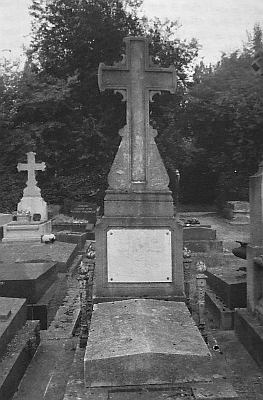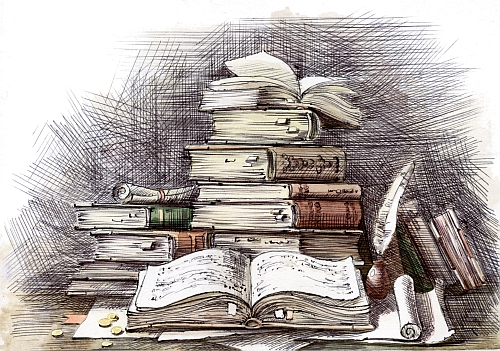Charles Carrington
Notes on an Old Bibliophile: A Biographical Sketch
Copyright © 2006 Sheryl Perry
On Nov. 11, 1867 in the London parish of Bethnal Green, Paul Henri Ferdinando (who later took the pseudonym Charles Carrington) was born to Sarah Elizabeth Cox (1834-1890) and John Isaac Ferdinando (1822-1904). The sixth child born to John and Sarah, Carrington grew up in a large family of five brothers and three sisters: John Issac, Ruth Sarah, Fredrick Aaron (died at birth), Frances Charlotte, Joseph Benjamin, George Samuel, Jessie Elizabeth and Fredrick Edward. Carrington's Family Tree (immediate family)

Paul's baptism record
Childhood
Growing in up in Bethnal Green in the late 1800s, which was considered one of the worst slums of London, could not have been easy. The homes there had been quickly and cheaply constructed to meet the housing demands of the thousands of people who were converging on London hoping to find work. Many families had to share the same house; often one family lived in a single room of the house (or two rooms if you were lucky) because they couldn't afford anything larger. A buildings inspector commented in 1863 that he had examined a considerable part of the district and "with few exceptions, each room contains a separate family; some consisting of mother, father and eight children. The first two adjoining houses that we looked into, of six rooms each, contained forty eight persons".
Poverty forced the children of Bethnal Green to start earning a living at a young age. To help put food on the table, Carrington had his first job as an office boy when he was 13 years old. When he was 16, it's said that he was selling books from a book barrow in Farrington Market.
Marriage and Family
On September 17, 1891, Carrington married 22 year-old Jeanne Héloise Espargillière (1869-1902) in Paris, France. Although her headstone gives the birth year as 1867, her birth record shows she was born 20 May 1869 to Barthélemy Espargillière and Françoise Leymarie. Paul and Jeanne had three children: George Paul (1892-1963) who was baptized in Stepney, Tower Hamlets, England; Marie Josephine (1893-?) born in West Ham, London, England; and Louis Frédérick (1896-?), born in Paris, France.
Henri Michaux, who worked for Carrington beginning in 1920 (and who later ran the shop after Paul's death), states that George was a sailor in the English Royal Navy and that Fred served in the English Army. It's known that Fred was living in Mons, Belgium and that he married a "Miss Legrand" Is it possible that she was related somehow H. Legrand the publisher?? Certainly, Carrington and Legrand were acquainted, if not friends.
Mendes speculates that Carrington may have been publishing and/or selling books in London in 1890 partially based on the fact that "his catalogues invariably give the rubric 'Maison Fondée en 1890'". Could the 1890 date be in some way associated with his wife Jeanne or perhaps with his mother who died in 1890? I bring that up because I'm not yet convinced Carrington was actually publishing anything in London before moving to Paris.
Carrington's only other known relationship was with Albertina "Tina" van Hael. Sometimes refered to as his mistress, I think girlfriend may be the more appropriate description since it's not clear whether their relationship began during his marriage to Jeanne or after she died in 1902. I'll speculate that they either met after he was exiled from France and relocated to Belgium, which is where Tina was from, or he moved to Belgium because of her. It doesn't appear Carrington and Tina ever married, but they did have one son together, William H. Ferdinando.
Paris and Exile in Brussels
Although Carrington married in Paris, his first two children were born in London, so at some point between 1893 when Marie was born and 1896 when his son Louis was born, Carrington and Jeanne moved to Paris where he opened his first bookshop at 32 rue Drouot. In 1896 he issued his first openly published book, Marriage-Love and Women Amongst Women otherwise entitled The Book of Exposition. It appears he didn't stay at the Drouot address for long. In that same year he also published Untrodden Fields of Anthropology, with the title page giving an address of 13 Faubourg Montmartre; where he remained until 1907. His first clandestinely published book may have been Abishag, published in 1895, or one of a dozen other titles that have tentatively been attributed to Carrington.
At this point in Carrington's life I find myself wondering about his financial situation. The village where Carrington's first two children were born was, at the time, an area of merchants and wealthy citizens, not a slum with small, cheaply built homes. From the time he married Jeanne in 1890 until he moved to West Ham in c.1892, what was he doing to earn a living? How was he able to afford what appears to be an upgrade in his lifestyle within two years? His parents and relatives were all poor; and until he married Jeanne, no doubt much of whatever money he was able to earn went towards his family's household as would have been customary.
Then there's the move to Paris. Where did the money come from to rent the space for his bookshop, let alone acquiring an inventory? It's highly questionable that Carrington was selling and/or publishing books in London before Paris. If I had to take a guess, and this is just a guess, perhaps Carrington married into money, or maybe someone in Jeanne's family left her an inheritance. But the fact is, at this point in time we know next to nothing about his pre-Paris years and so we're relegated to guesses.
In 1905 Carrington's nephew, James Ashley (son of Frances Charlotte Ferdinando), moved to Paris to work for Carrington as his secretary. Exactly what the job entailed is unknown. As bookseller and publisher Carrington appeared to be doing quite well with a large number of clandestine and openly published books to his name.
Carrington was deported from France in 1907 for consistently publishing and selling literature "of a very obscene and vulgar character". He, along with his nephew James, moved to Bruxelles where he continued his publishing activities albeit not on a large scale. His first known address was at 15 rue des longs Chariots, Ixelles (also known as Elsene; the street itself no longer exists) where he stayed until Dec. 11, 1909. He moved on to 21 rue d'Assaut and in 1910 to 10 rue de la Tribune in Brussels where they both remained until at least April 15, 1912. During this time it appears he only issued 5 publications, one of which was The Picture of Dorian Gray.
The Final Years
When Carrington moved back to France in 1912 he took up shop at 11 rue de Châteaudun but financially his days of publishing were coming quickly to an end. In a 1913 reply to a letter from Lawrence Forster in Canada on the feasibility of producing a bibliography of English erotica post-Ashbee, Carrington indicates he is very poor "I am now practically done for and in fact have not enough money to bring out the second part of the Perfumed Garden nor other translations from the Arabic, the French and the Latin that I have all ready to issue." Somehow, though, he was able to keep his bookshop open and he did publish a small number of books up until his death. Interestingly, between 1912 and 1914 he published four books using his real name, Paul Ferdinando, on the imprint; the only time in his career he had ever done so.
By 1920, Carrington was reportedly blind from the effects of syphilis before eventually being admitted to the mental hospital at Ivry, south of Paris. It is there that he died on October 15, 1921, just shy of his 53rd birthday. In his will he left 4,000 francs divided among his three children from his marriage to Jeanne. A 15,000 insurance policy was left to Tina and their child. During his 26 years in business, Carrington published nearly 300 books.

Sources
Colligan, Colette. A Publisher's Paradise. University of Massachusetts, 2014.
Documents (courtesy of Gilbert Rigot, Carrington's great-great nephew):
Letter of recommendation dated Bruxelles, April 15, 1912 written by Carrington for Ashley.
Letter of condolance on Carrington's death.
England census records, 1871, 1881 and 1891. Ancestry.com
Ferdinando genealogy records. http://www.ferdinando.org.uk
Mendes, Peter. Clandestine Erotic Fiction in English 1800-1930. Scolar Press, 1993.
Vital records. Ancestry.com


